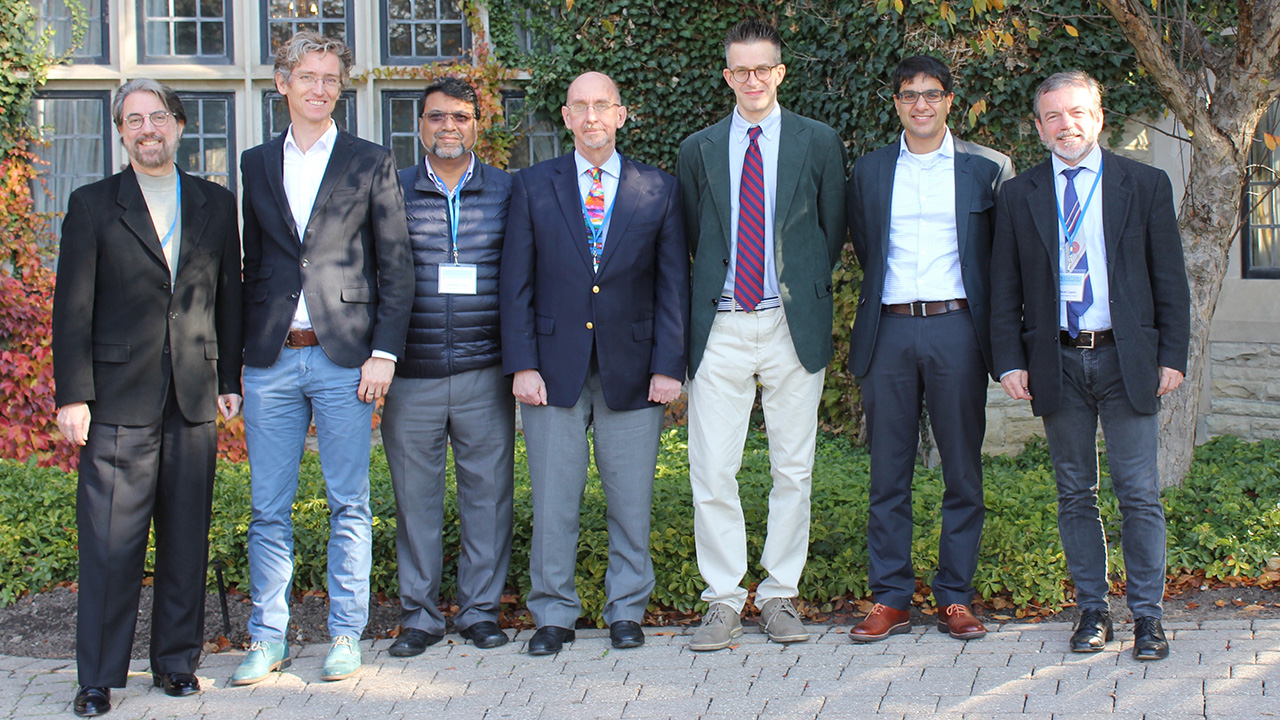Magnifying innovation
The holy grail of cancer research is to develop targeted treatments that work better, have fewer side effects and can be adapted for each patient. Image-guided medicine is integral to this quest, and featured prominently in conferences on cutting-edge cancer research held at Sunnybrook Research Institute (SRI). Scientists at SRI hosted the first meeting, “Innovations in Radiation-Engineered Therapy,” on Nov. 14 and 15, and the second, “Innovations in Cancer Therapy and Response Monitoring,” on Nov. 16 and 17.
Dr. Arjun Sahgal, a clinician-scientist in SRI’s Odette Cancer Research Program, co-chaired the former. He says the aim was to “bring together international experts—clinical and research—to talk about the new technologies that we have already started to implement, including the MR-linac [linear accelerator] and MR brachytherapy, so we can develop these new technologies and start inventing the future of health care now.”
Both systems use MRI guidance during radiation therapy to target a tumour precisely and to assess response in real time. For example, the improved accuracy afforded by the MR-linac reduces the size of the safety margins around tumours, thereby minimizing how much healthy tissue is exposed to radiation.
Learning about the first clinical use of the technology was a highlight for Dr. Greg Czarnota, director of the Odette Cancer Research Program at SRI and meeting co-chair. “Seeing the fruition of the MR-linac and how all the various research and development over the past 10 to 20 years has come together in a real-life clinical product has been very exciting,” says Czarnota, who is also chief of radiation oncology at Sunnybrook.
The first conference also featured research into stereotactic radiosurgery, which uses high-dose, focally delivered radiation to kill brain tumours. Sahgal’s research has shown it is superior to whole-brain radiation in younger patients with limited disease.
The focus of the second conference was on new imaging methods to monitor cancer therapy response, which Czarnota says is essential to tailoring care to patients and developing new treatments. It showcased new methods in MRI and the first human images obtained through photoacoustic imaging, which uses short laser pulses to excite ultrasonic signals that are detectable by ultrasound. Researchers are using this technique to make maps of how much oxygen a tissue is getting. This information could help doctors with treatment planning because low oxygen levels in tumours make radiotherapy and chemotherapy less effective.
Both conferences emphasized collaboration. “We designed this to be a partnership with industry because innovation needs industry support,” says Sahgal. To this end, SRI is part of a global consortium that is working with Elekta, a medical device company, to optimize use of the MR-linac technology. Much of the research coming out of SRI has been supported over the years by the Canadian Institutes of Health Research and the Terry Fox Foundation.
The conferences were a great success, says Dr. Michael Julius, vice-president of research, Sunnybrook. “I think anyone attending would have been extremely impressed by the at-capacity crowd of these two events; I know I was. I’m proud of how this reflects upon SRI as the centre of what will be—in some instances already is—tomorrow’s cancer therapy. Together, research and medical device leaders are transforming care for patients. It’s magic.”






